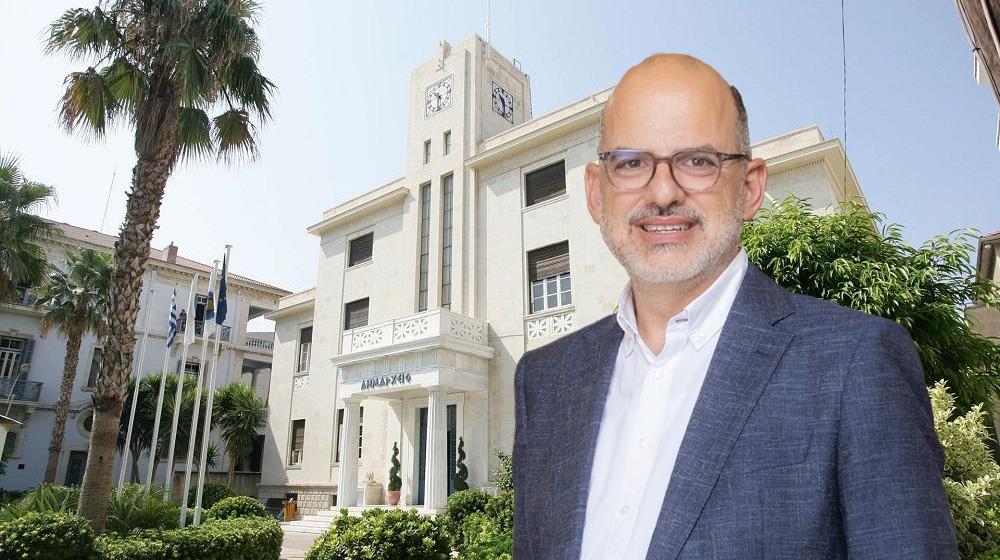Limassol Mayor Yiannis Armeftis addresses the pressing challenges facing the city, from daily traffic congestion to housing shortages, and outlines the Municipality’s plan to build an inclusive, green and smart city.
You came to the role of Mayor with a background in architecture. How has that shaped your priorities and decision-making, particularly when it comes to urban design and development?
My background has definitely shaped my vision for Limassol. One of the greatest strengths of architecture is that it teaches you to think holistically, to connect functionality with form and, most importantly, to place people at the centre of every plan. From the very beginning of my term, we pushed for a comprehensive plan for the city. Urban development must follow a strategic path to be inclusive and sustainable. Without a plan, Limassol risks favouring development over the needs of its residents. Our planning includes green routes, more trees and parks, walkable neighbourhoods and improved traffic flow, among other things. We’re not looking for superficial fixes; we’re committed to creating a long-term, human-centred design for an accessible city for all. Architecture gave me the tools to understand space more deeply and to prioritise people in the design process.
Traffic congestion remains one of Limassol’s most persistent challenges. What are the Municipality’s current proposals to ease pressure on the transport network and how soon can residents expect tangible improvements?
Congestion is certainly one of Limassol’s most pressing and persistent issues. We understand that it’s a problem that didn’t emerge overnight and won’t be solved with quick fixes. At the municipal level, we’re working on solutions that address the root causes and can modernise our transport infrastructure. We have already held meetings with the Minister of Transport to coordinate specific projects, including the northern bypass, the connection of the coastal road to Franklin Roosevelt Avenue, the completion of the remaining phases of Agias Fylaxeos Avenue, the opening of new exits on the intercity highway and the implementation of one-way street systems. We’re actively exploring ways to restructure the city, improve traffic flow and build a sustainable mobility network that prioritises both efficiency and environmental responsibility. We’ve begun developing a strategic vision that includes enhancing public transport, expanding infrastructure for walking and cycling, and improving urban planning to reduce reliance on cars. These changes require coordination and time. There are no instant solutions but it’s important to lay the foundations and work towards positive changes.
There’s growing demand for more green space in Limassol – not just parks but also walkable green avenues – along with improvements in waste collection. What is being done to make the city greener, cleaner and more sustainable?
There is, indeed, a growing demand and environmental sustainability is one of our top priorities as we work to improve the quality of life in Limassol. Our plan includes a series of targeted projects across the city. We’re prioritising the development of 20 kilometres of green routes – safe, dedicated corridors for pedestrians and cyclists that connect neighbourhoods and promote non-motorised transport. We’re also planning linear parks along the city’s natural streams, transforming them into accessible green spaces. One flagship project is the Limassol Metropolitan Park, which will serve as a vital urban lung and community hub, as well as linear parks along the streams. Additionally, we want to revitalise Aktaia Odos, a key coastal road, to enhance its aesthetics, functionality and accessibility. At the same time, we’re also improving waste collection and the overall management of city services. Green space is not a luxury, it’s a necessity. It supports healthier living and enhances the quality of life for all residents.
House prices and rents are the highest on the island. How is the Limassol Municipality addressing the city’s housing issues?
Housing is a major challenge for Limassol. We are fully aware that rents and property prices have reached unsustainable levels, placing enormous pressure on young people, families and vulnerable groups. We consider our collaboration with the Cyprus Land Development Corporation (KOAG) to develop affordable housing projects a cornerstone of our efforts. A few days ago, an agreement was signed for the implementation of the “Affordable Housing – Phase A” project, which provides for the construction of 138 affordable housing units in the Ayios Nikolaos area. This is a crucial first step in addressing one of the most fundamental problems facing our society today: every citizen’s right to decent, safe and affordable housing. The project features modern architectural design, functional public spaces, green areas, enhanced energy efficiency standards and an urban planning vision that emphasises community, accessibility and human scale. This project does not mark the end of the journey but rather the beginning. The problem is significant and it cannot be solved by a single project. Our intention is to submit proposals for similar developments on other municipal plots of land as well.
The President recently announced €660 million worth of projects for the Limassol district. From the Municipality’s point of view, what are the priorities? When can residents expect progress?
The recent project announcements are a significant and positive development for Limassol. These initiatives directly address the critical daily challenges our residents face, such as traffic congestion and the urgent need for affordable housing. These projects align perfectly with the strategic goals that we’ve set and have been advocating for in our recent discussions with the relevant ministries. Our primary intention now is to collaborate closely with the Government to ensure that these announcements are swiftly translated into concrete action. Specifically, for the Municipality of Limassol, these key projects include the construction of the Northern Bypass, the promotion of redevelopment plans for Aktaia Odos and Agias Fylaxeos Avenue, the construction of 138 affordable apartments by KOAG, the development of an Archaeological Museum and the creation of the Metropolitan Park. Our residents deserve clear timelines and full transparency on these vital developments. As a Municipality, we are committed to advocating for both urgency and accountability.
Limassol has ambitions to become a smart city. What does that vision mean to you and how close are you to making it a reality?
When we talk about transforming Limassol into a smart city, we’re referring to far more than just sensors, apps or digital dashboards. There’s a whole philosophy behind it. A truly smart city is one that genuinely works for its people. It’s about creating coordinated systems where transport, waste management, housing and public services are all interconnected, sustainable and highly responsive to real needs. Ultimately, technology should empower us to decentralise services, significantly improve public mobility and enhance infrastructure in ways that boost both efficiency and the overall quality of life. For example, we would like to see smart parking, LED lighting and a smartly organised city. However, without a clear strategic direction, digital tools risk becoming merely cosmetic rather than truly transformational. We are still in the early stages of this journey but, again, we are actively laying the foundations for meaningful, long-term change. Above all, a smart city needs a smart design.
Fast-forward five years: what kind of city do you hope Limassol will have become under your leadership?
I envision Limassol as a truly inclusive and sustainable city for everyone. A city where children can walk safely to school, seniors enjoy accessible infrastructure, and all residents feel a strong sense of belonging and pride in their neighbourhoods and shared public spaces. My vision is for a green and clean Limassol, boasting improved connectivity and alternative transport modes that effectively link our communities. I see a creative city with a vibrant cultural identity, modern infrastructure, high-quality sports facilities and a lively urban centre where innovation and creativity truly thrive. Our core goal is to bridge the divide of a “two-speed” Limassol, ensuring an upgraded quality of life across the entire city. This requires a fundamental shift from reactive problem-solving to a more strategic, long-term model of urban governance. Change on this scale takes time and careful planning but it’s both necessary and entirely achievable. That is what drives our commitment to reclaim Limassol’s full potential.
(Photo by Giorgos Charal.)
- This article was first published in the June issue of GOLD magazine, entitled The Limassol Issue. To view it click here









